Biesse has pioneered several game-changing features to enhance the cutting performance of its Selco beam saws. By automating manual tasks and monitoring key processes within the saw, these clever tools de-risk the cutting operation, closing the margin for error and making consistently clean lines a realistic goal for furniture manufacturers.
Addressing the ‘saw’ points
Blunt blades, misaligned or incorrectly positioned blades, the wrong amount of set and the wrong cutting speed will all result in less than perfect cutting performance. Whilst a trained eye might be able to recognise and correct these issues, less experienced operators may well struggle. That is why Biesse has engineered four features that take the complexity out of beam saw operation and proactively prevent these problems. Setting the blades, executing blade changes, maintaining a straight cut and identifying the optimum cutting speed have never been easier thanks to these tools, which are the key to repeatable precision cutting.
These features are proving very popular with manufacturers of high end kitchen, bedroom, bathroom and office furniture, for whom flush joints and straight edges are essential elements of a premium finish.
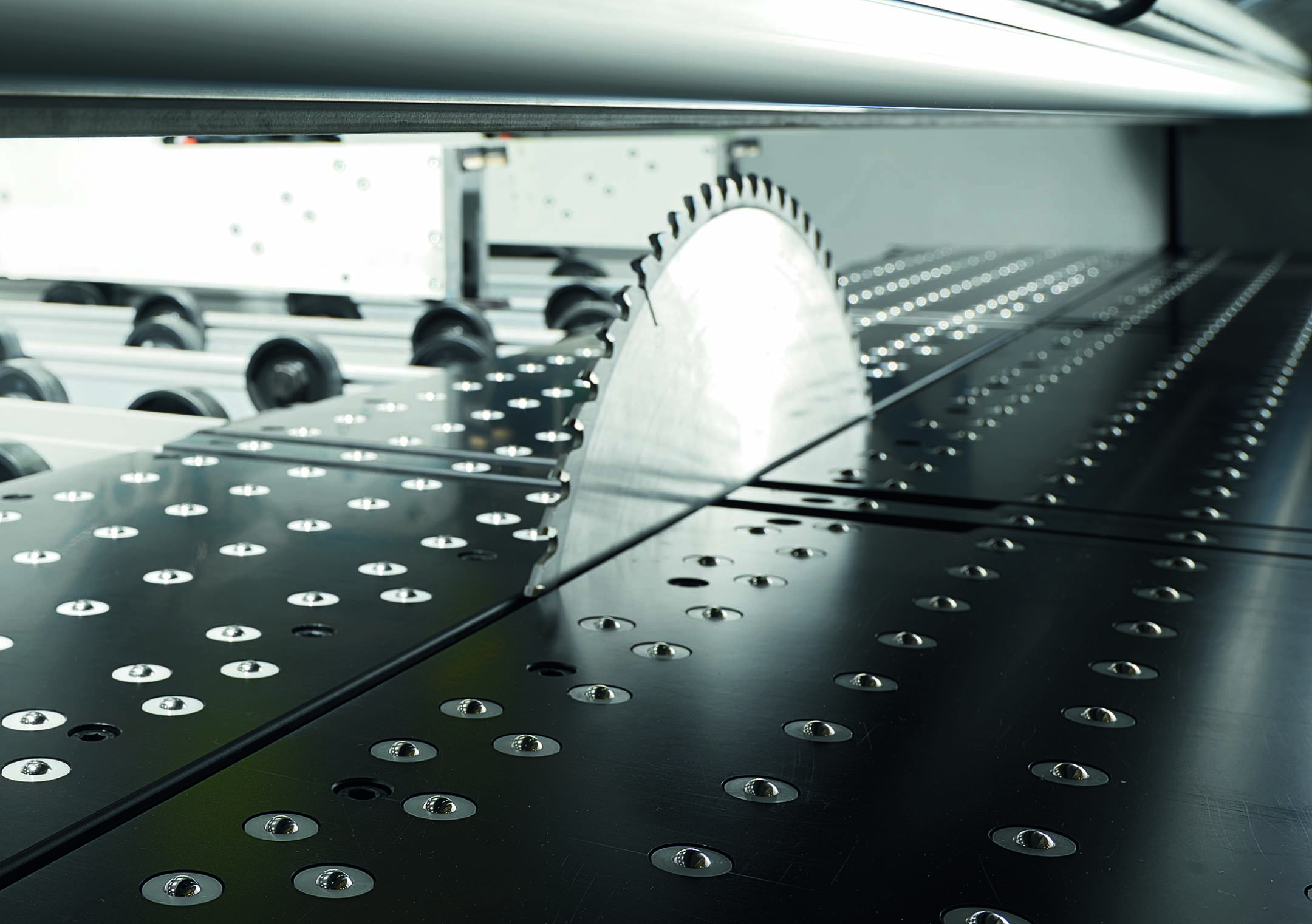
Quick Change Blade: locking out blade replacement errors
Beam saw blades need to be changed regularly to maintain cutting performance. The intervals between changes will vary depending on usage - on a high output line operating an eight-hour shift pattern, the blade might need to be replaced twice a day, whereas a small furniture manufacturer running bespoke jobs might only need to replace the main blade once a week.
Blade changes are generally effected by unscrewing the blade with a tool, removing it from its hub, placing the new blade on the hub and tightening it with the same tool. The problem is that this method is time-consuming and introduces a margin for error in terms of the tightness of the blade on the hub. Screwing the blade too tightly prevents it from rotating freely and will ultimately lead to blade breakage. If the blade is too loose it will flex, resulting in erratic or wavy cutting.
Biesse’s patented Quick Change Blade allows beam saw users to execute tool-free blade replacements in less than one minute. The operator simply needs to press a button to release the hub cap, remove the blade and replace it with a new one, then press the button again before replacing the hub cap, which will then lock the blade in position.
As well as being safe, quick and ergonomic, the major advantage of this feature is that it guarantees error-free hub positioning and locking. The blade is automatically fixed to the carriage when the hub cap is replaced, so the user doesn’t have to worry about it being too tight or too loose. In addition, Biesse’s blade change mechanism is a closed system that prevents dust from getting into the saw and causing build-up and blockages.
The Quick Change Blade is standard on every Selco model, making easy, tool-less blade changeovers accessible to manufacturers of all sizes.
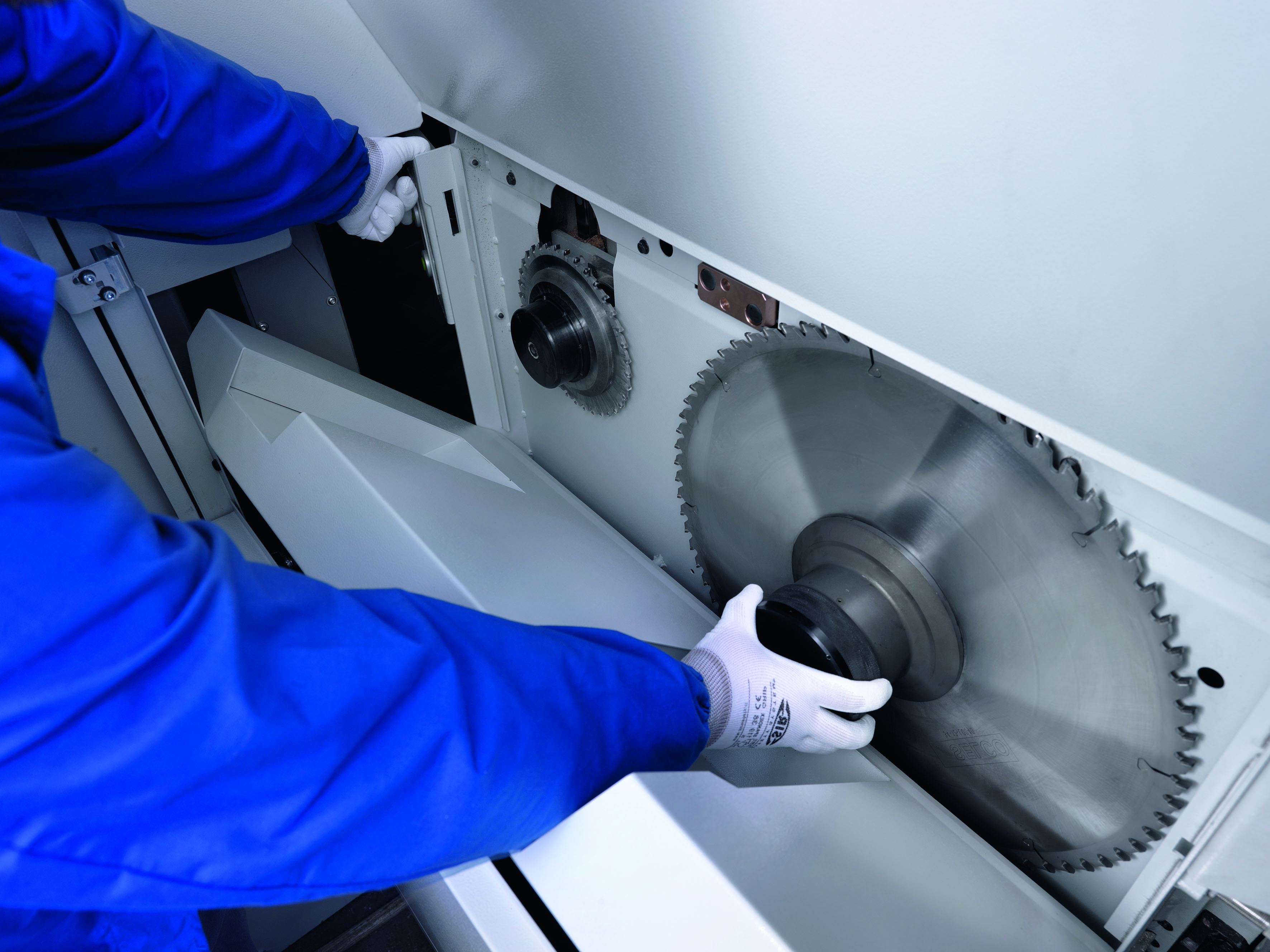
Digiset: get blade setting right first time, every time
Accurate setting of both the scoring blade and the main blade is crucial to achieving a clean cut. If the scoring blade isn’t set in the right position, it can lead to ‘break out’ or chipping of the material when the main blade subsequently performs the actual cut.
However, setting the blades on a beam saw isn’t easy and takes time. It is a process of trial and error, which involves the operator estimating the target position, using a tool to adjust the blade and running a test board. For manufacturers of bespoke furniture this task is particularly arduous as it has to be repeated each time the material is changed.
Recognising blade setting as a ‘pain point’, Biesse has developed a feature called Digiset, which facilitates fast, accurate setting of the scoring and main blades, vertically and horizontally. Digiset allows the user to store settings for different blade and material combinations. The operator can then simply call up the pre-programmed recipe and the blades will move into the optimum position for that material. Not only does this reduce time spent on manual adjustments, it leads to less material waste and ensures repeatable and accurate cutting.
Digiset is available as an option on entry level Selco machines and as standard on the Selco WN6 and WN7.
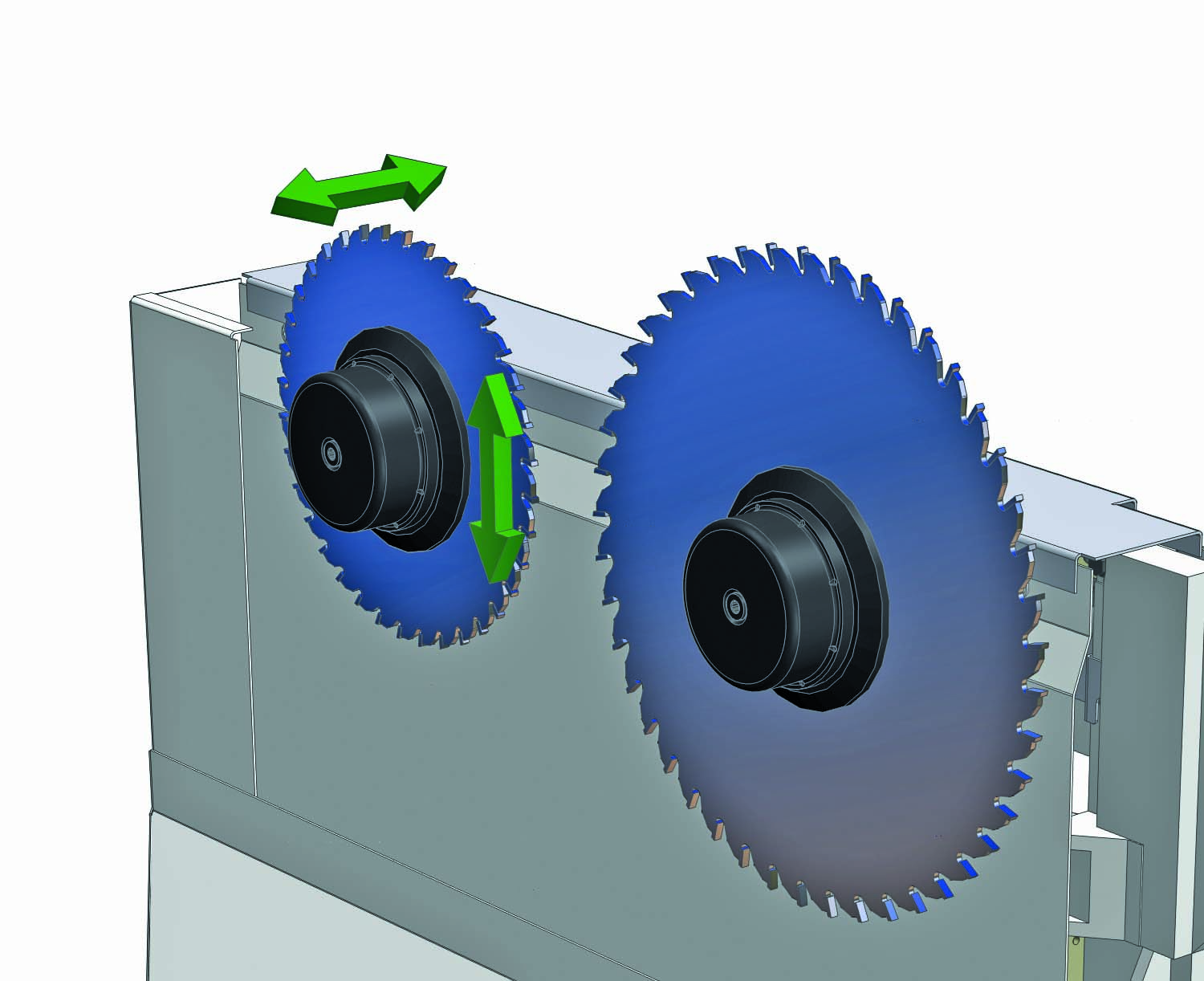
Ammeter Display: keeping speed in check
Cutting speed is determined by RPM - the rotating speed of the blade. The optimum RPM will vary for different blades and materials and exceeding that speed can be detrimental to cutting performance and may even result in costly damage to the beam saw.
For example, when cutting hard materials such as solid wood, running the saw at a higher than recommended speed may overload the motor and cause it to burn out. Equally, when cutting MDF, black lines on the surface of the board are an indicator that the blade is moving too fast. Therefore, it is important to be aware of RPM at all times during beam saw operation.
RPM can also be a warning flag that there is a problem with the blade. Discrepancies with RPM (if RPM is higher or lower than it should be) often mean the blade is blunt or fixed incorrectly.
The higher the RPM, the higher the electrical current passing through the beam saw. On Selco beam saws, an amp meter monitors the electrical current of the beam saw in real time. This reading is displayed at all times on the machine’s controller, giving the operator a useful window into blade performance. By checking, monitoring and displaying RPM, this feature allows the user to take necessary action if irregularities in RPM are detected, whether that is replacing the blade or reducing operating speed.
The Ammeter Display is available on all Selco beam saws.
Anti Flexion System: keeping the blade on the straight and narrow
External vibration in the factory environment can cause the structure of the beam to shift over time. Even the slightest movement can affect cutting accuracy, which is a particular concern for manufacturers who are working to extremely tight tolerances.
Biesse has engineered its Anti Flexion System to counter this problem by detecting and preventing blade deflection. A sensor monitors the flexion directly on the blade and transmits that information to the machine's software. If the blade's path creeps outside of the set flexion tolerances, this device will alert the operator, who can then investigate whether the blade needs replacing or some maintenance is required.
The Anti Flexion System is available as an option on the Selco WN6 and above.
See our Selco WN6 in action.
Watch our Selco WN7 video.
Discover our Selco Beam Saw range.


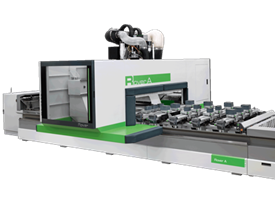
.png)
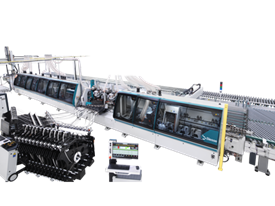
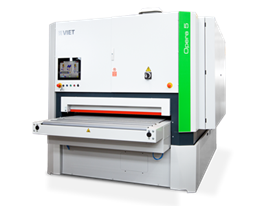
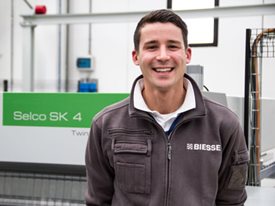
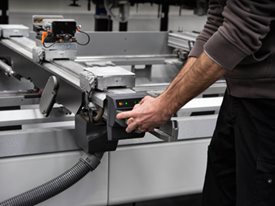

 Worldwide
Worldwide
 Italia
Italia
 United Kingdom
United Kingdom
 Россия
Россия
 France
France
 中国
中国
 Asia
Asia
 Deutschland
Deutschland
 España
España
 Schweiz
Schweiz
 North America
North America
 India
India
 Australia & New Zealand
Australia & New Zealand
 Türkiye Cumhuriyeti
Türkiye Cumhuriyeti
 Middle East
Middle East
 Brasil
Brasil